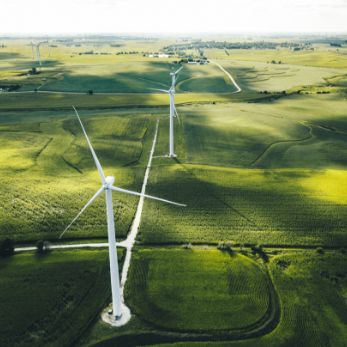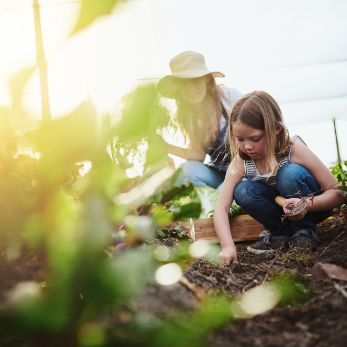Irish residents experience one of the highest qualities of life in the world with one of the highest educated and employment levels in Europe. Its residents also benefit from the natural environment. As an Island on the edge of Europe, it provides exceptionally pure air and water quality and green rolling countryside within minutes drive of anywhere in the country. It is globally renowned as a very high quality food producer and is mostly self sufficient in this respect.
Ireland is a member of the European Union and the only country in the EU whose first language is English. It has a sophisticated, well educated workforce and State structures which are transparent and fair. Ireland ranks above the average in jobs and earnings, housing, personal security, health status, education and skills, social connections, subjective well-being, work-life balance, and environmental quality.
Human Development Index value (HDI) of their citizens, basing the rankings on the average education, income, and life expectancy. Ireland’s HDI ranked at 0.942 with a life expectancy of 82 years. The country is also one of the most highly educated in the world with Irish citizens spending an average of twelve years in full-time education.
There is a strong sense of community and moderate levels of civic participation in Ireland, where 95% of people believe that they know someone they could rely on in time of need.
Pollution
Ireland’s environment is, for the most part, very good and stands up well in comparison with any other country in Europe or in the wider world. This is due in no small way to an accident of geography and an accident of history. Geography places Ireland at mid-latitude, not too close to the heat of the equator or to the cold arctic and its position on the north-western edge of the continent ensures a constant supply of clean unpolluted air and plenty of rain from the Atlantic Ocean.
History decreed that Ireland missed the industrial revolution of the 19th century and, so, missed out on the polluting industries of that period. Up to the middle of the 20th century, Ireland’s economy was based on grassland agriculture which was not very intensive and placed little pressure on the Irish environment. Much has changed in Ireland in the past 50 years, and the pressures on the environment have grown, but overall the essentials for life of clean air, clean water and productive soil are abundant on this island.
Freedom of Speech
Freedom of speech is protected by Article 40.6.1 of the Irish constitution.
Healthcare
Ireland is one of a small number of countries where the delivery of Health and Social care services comes under the auspices of one government department. The services delivered range from neurosurgery at one end of the spectrum to child and family welfare services on the other end. Services are usually categorised by acute care, primary care, continuing care and community care services – such as disabilities, mental health, social inclusion and children and family welfare services. The delivery system is mixed with a range of public, voluntary and private providers in the different care settings.
The Irish health system is a mix of both public and private institutions and funders. It is primarily tax financed and around 50% of the population has private health insurance. The Irish Government has invested significantly in the health service in recent years with notable results. The focus has now moved to consolidation and improved quality and efficiency. Any person, regardless of nationality, ordinarily resident in Ireland, is eligible for health and personal social services. To be eligible means that a person qualifies to avail of services, either without charge (full eligibility) or subject to prescribed charges (limited eligibility). Just under 30% of the population has full eligibility. Any person ordinarily resident in Ireland who does not have full eligibility is entitled to free hospital treatment subject to a statutory levy of 55 euros per day up a maximum payment of 550 euros in any twelve consecutive months.




Democracy
The Irish republic is a parliamentary democracy. Its constitution was promulgated in 1937 and can be amended through a referendum. The country’s head of state, the President (Uachtarán), is elected directly by the public for a term of seven years and is eligible for re-election for a second term. The president normally acts on the advice of the government but also consults an advisory Council of State in the exercise of certain functions. The president signs and promulgates bills passed by the Oireachtas (Parliament) and, when so advised by the Taoiseach (Prime Minister), summons and dissolves the Oireachtas. The president may, however, refuse to dissolve the Oireachtas on the advice of a prime minister who has ceased to command a majority in the Dáil Éireann (House of Representatives). The president is the guardian of the constitution and may, in certain circumstances, submit a bill passed by the Oireachtas to the people in a referendum or refer it to the Supreme Court to decide on its constitutionality.
There are two houses of the Oireachtas—the Dáil and the Seanad Éireann (Senate). Chief legislative power is centred in the 158-member Dáil. The Seanad may delay bills passed by the Dáil, or it may suggest changes in them, but it cannot indefinitely block their passage into law.
Executive power is vested in the Prime Minister, who heads the Cabinet and presides over its meetings. The Prime Minister, the Deputy Prime Minister (Tánaiste), and the Minister for Finance must be members of the Dáil. The other government ministers must be members of either house, but no more than two may be senators.


Free Access To Education
All children living in Ireland have the right to education. They are also entitled to free pre-school, primary and secondary education, but uniforms, books, stationary and any school trips need to be paid for. There are also private schools where fees are charged annually. School uniforms are quite common in all levels of school, but vary from school to school.
Amenities
Ireland is well serviced with a huge array of public parks, waterways, national parks, coastline and lakelands all freely accessible to everyone. As an island nation, you are never more than an hour and a half drive to the sea or 40 minutes to the countryside.
There is a wide range of sports activities available across the entire of Ireland with more golf clubs per head of population than anywhere else in the world. Tennis, soccer, rugby, Irish football (GAA) and basketball, athletics and swimming are hugely popular with clubs in almost every large town and other niche American and European sports are also well represented.
Most suburban areas have a good range of boutique shops near town centres or market squares while large shopping districts fully serviced with leisure and entertainment centres providing everything from fashion to restaurants, cinemas to bowling are easily accessible through Ireland’s superb public transport system or via the excellent road network.
Food
When it comes to food on the island of Ireland, you need to start at the very beginning. The purity of the natural produce here has made the island one of the most talked-about food destinations in Europe, with an emphasis on artisan cheese, exceptional beef and lamb and fresh-off-the-boat seafood.
The green pastures, deep valleys and abundant waters surrounding the island have helped create outstanding natural flavours that you won’t get everywhere else. From sublime smoked salmon to the creamiest butter imaginable, Ireland’s food boasts an impeccable provenance and can be best enjoyed here – in the very place it comes from.
With such a prestigiously stocked natural larder, it’s no wonder that the island’s most creative chefs make full use of the great produce on their doorstep. Whether you’re dining in an esteemed Michelin-starred restaurant such as the Cliff House in County Waterford or a top gastro pub such as The Poacher’s Pocket in County Down, you’ll find home grown ingredients dominating the menus.
Sustainability
The Irish people believe that the natural environment is a strategic and valuable asset for Ireland that must be protected and proactively managed to ensure it forms the basis for a healthy society and their economic wellbeing. In line with Irish, European and international policies, Ireland is focused on a resource-efficient, low-carbon and environmentally-friendly economy in which natural resources are protected and enhanced, and citizens’ health and wellbeing are safeguarded.
This is being carried out through a number of government initiatives focused on reducing the number of cars in cities, increasing electric vehicle use, decreasing the amount of carbon emissions from agriculture by compensating further along the production cycle and incentivising industry to reduce emissions through retrofit of existing lighting and heating, monitoring and managing electricity usage in cities and encouraging smart city development.




Nature
Ireland offers unique opportunities to access wonderful countryside. No matter where you are living, coastal walks are always just a short drive away. Ireland has some of the most spectacular coastal areas in the world with the renowned ‘Wild Atlantic Way’ and ‘Causeway Coast’ topping the list.
Ireland is shaped like a bowl with wonderful mountainous regions just in from the coast and a large lowland bog in the centre. Both offering stunning scenery and varied wildlife from wild deer to large salmon who travel across the Atlantic to spawn each year in the mountains of Ireland.
The countryside is so beautiful that it is often the setting for books and movies of enchanted lands from Narnia which is based on the beauty of the Mourne Mountains, to Star Wars which uses the Skellig Islands as one backdrop, to many international TV series such as Game of Thrones and Vikings which both use many of Ireland s most stunning landscapes as the setting for their storylines.
Population Density
The island of Ireland is located in the North Atlantic and is the 3rd largest island in Europe with an area of 32,595 square miles (84,421 square kilometres) which ranks 122nd in the world in terms of size. The Republic of Ireland covers 5/6 of the island while Northern Ireland, part of the United Kingdom, covers the rest of the island. As of 2017, the population of Ireland was 4.784 million people, leading to a population density of roughly 147 people per square mile (57 people per square kilometre) which ranks at roughly 122nd in the world in terms of population density.
Nearly two-thirds of the Irish population live in urban areas, and several significant cities reflect this. The capital and largest city of the Republic of Ireland is Dublin, which has an urban population of 1.9 million. Dublin was originally founded as part of a Viking settlement, becoming the nation’s principal city after the Norman invasion. Dublin covers just 44 square miles, making the population density 43,181 people per square mile. Cork is the next largest city in Ireland with a population of 399,216. Other major cities with populations in the 100,000 range include Limerick, Galway, and Swords.
Dublin
Dublin is one of Europe’s oldest and greatest cities, one that retains its historical and cultural charms. But it is also a wonderful city that offers trendy bars, elegant restaurants and stylish shops and hotels.
Dublin’s Docklands are the home to many of the biggest names in technology and banking in the world and is a rejuvenated smart city district with incredible modern architecture and a smart, professional and cosmopolitan workforce.
Dublin offers the opportunity to enjoy dinner in a castle, enjoy world pint of Guinness in a friendly Irish Pub, or play a round of golf. Whether your interest is sport, history, art or literature, whether you want to follow a heritage trail, visit a zoo, or step back in time and visit a heritage town, Dublin is packed with interesting things to do. The options are endless and, of course, the welcome is always warm.
Cork
Cork City is Ireland’s second largest city, with Dublin the capital being the largest. Steeped in history, Cork City is fast gaining a reputation as one of Europe’s hippest cities. Like Venice, the city is built upon water, and the city centre is built on an island in the River Lee, just upstream of Cork Harbour. The two channels of the River Lee which embrace the city centre are spanned by many bridges, and this gives the city a distinctive continental air.
Cork is renowned for its culinary flair and vibrant cultural scene. The city was the European Capital of Culture in 2005 and listed by the Lonely Planet Guide among the top ten cites for ‘Best in Travel in 2010’. A strong festival programme attracts the best of film, jazz, folk, literary and musical talent year round.
You certainly won’t be short of things to do.
Limerick
With its magical blend of City and Country, Limerick is a place where the bustle of city life fits easily with the relative tranquillity of its charming countryside. The City offers a glittering selection of shopping opportunities and a multitude of cultural, artistic and sporting events to be experienced and enjoyed. A modern and vibrant riverside city built on a medieval core on King’s Island with a population of c.80,000, Limerick, has a charter older than that of London.
The County divides itself neatly into west and east with many contrasting features. The northern boundary is formed by the River Shannon with its wide estuary at the head of which stands the City of Limerick, while the inner parts of the county lie along an attractive fringe of the aforementioned mountains and hills. Some of Ireland ’s most impressive archaeological and historical sites including the 5,000 year old Neolithic settlement at Lough Gur are located in the County.
Galway
Galway is one of the brightest and most intriguing jewels of the West of Ireland. It marks the halfway point on the Wild Atlantic Way and is the only city on the entire 2500km route. The city is exciting and bohemian, and at the same time full of culture, artistry, exceptional food and music. As well as being a popular seaside destination with long sandy beaches, Galway is also a thriving and cosmopolitan city centre.
Galway is also well known for its proliferation of festivals and civic events, with huge crowds gathering for the much-celebrated Galway International Arts Festival, the craic of the Galway Races, the spectacular Macnas Halloween Parade and numerous other events throughout the year.
Waterford
Waterford, was the first city built in Ireland. Originally a Viking town it has always been an important place in the history of Ireland. It still retains a great deal of its Viking heritage in its culture, architecture and craft scene which has at it’s heart the world-renowned Waterford Crystal. It is also still a very active sea port.
Waterford also offers visitors a choice between a cosmopiltan vibrant city, charming seaside resorts with miles of sandy beaches and countryside getaway locations set against the backdrop of the Comeragh Mountains. As a location to visit, the city offers much, while in addition, the newly restored Waterford to Kilmeaden narrow gauge railway is a fabulous way to take in the sweep of the Suir Valley and to go back 450 million years you can take a tour of the spectacular Copper Coast UNESCO Geopark.